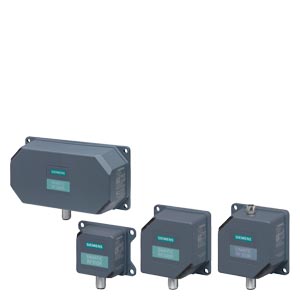
The Simatic RF300 is an inductive RFID (radio frequency identification) system that has been specially designed for controlling and optimizing the material flow in industrial production. With its compact component dimensions, it fits snugly into assembly lines, handling systems, and workpiece carrier systems in confined spaces. The RF300 is ideal for both simple and complex RFID applications and offers a convincing price/performance ratio. Now Siemens has renewed its Simatic RF300 RFID system by modern¬izing three readers, the RF310R, RF340R, and RF350R. The new devices combine all functionalities of the previous models with features that no other product currently on the market can offer: easy integration into TIA Portal, integrated set-up support, a “mixed transponder” oper¬ating mode, and simplified migration.
Various additional features. The readers enable full integration into Simatic controllers. And since they allow for configuration via TIA Portal, parameterization and programming errors are eliminated and commissioning is accordingly faster and easier. The new, user-friendly setup help is used to position perfectly the antenna and ensures high reliability, especially in the metallic environment. This helps the user optimize the reader-to-transponder position during assembly/commis¬sioning without any additional accessories. The RF310R and RF340R readers are equipped with an integrated antenna. The RF350R also allows for the connection of an external antenna. Different antenna designs and sizes are available for different uses. The readers also feature an additional transponder pro¬tocol (air interface) for Moby E transponders (MIFARE classic, ISO 14443) and the automatic detection of dif¬ferent types of transponders (RF300, ISO 15693, MIFARE classic). This simplifies the migration of older systems such as Moby I (only exchange of readers and transponders) and Moby E (system expansion with RF300 readers possible) and allows for new applications. This enables plant owners to cost-efficiently convert Moby E installations without exchanging transponders. The users benefit from greater flexibility in production control and lower complexity (for example, easier warehousing).

